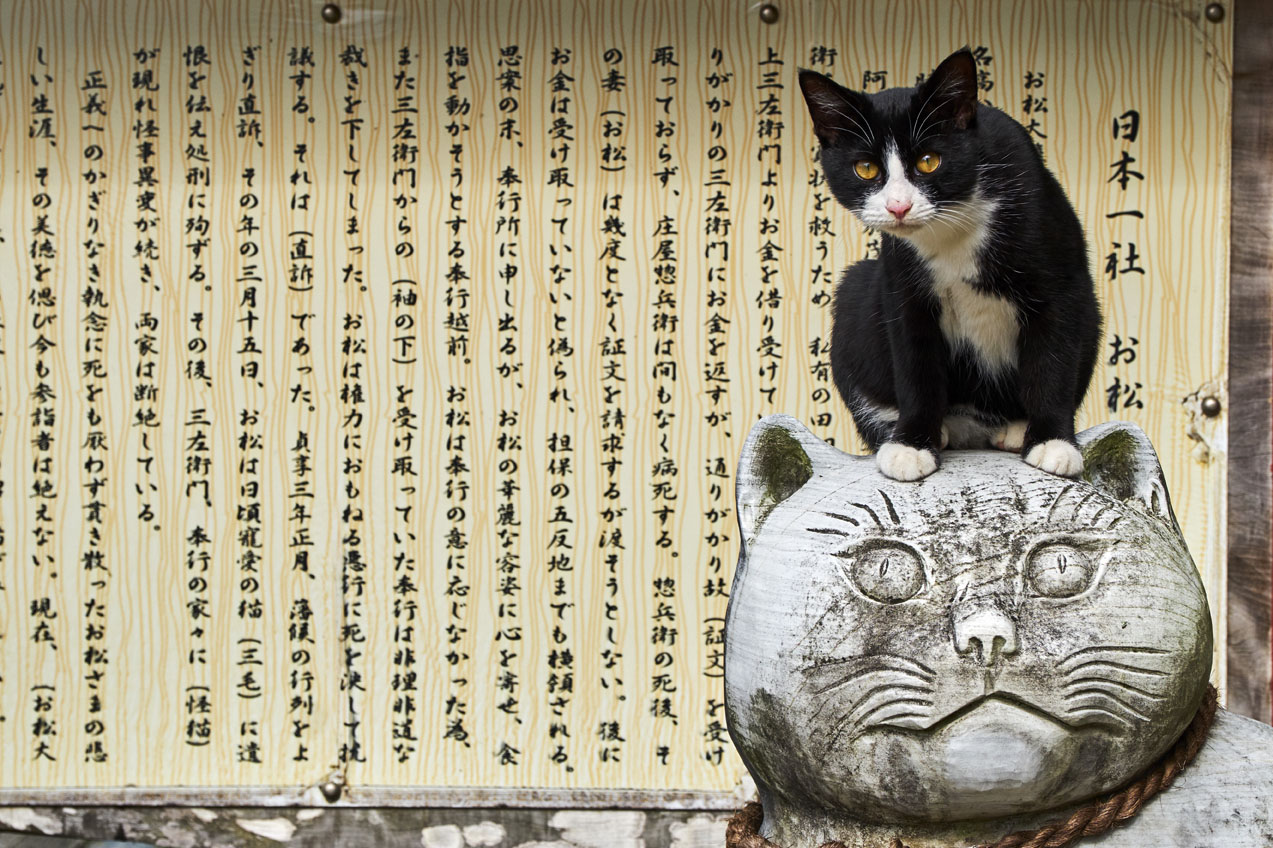In the picture bookThe Grand Odysée des Chats(The Travels of Cats) by a pair of photographers, first published in 2018, fills its pages with images of cats. They come from everywhere, doing everything from sunbathing beside the iconic blue houses of Chefchaouen in Morocco, playing in the ruins of ancient Greece to patiently waiting for leftovers at a Japanese fish market.
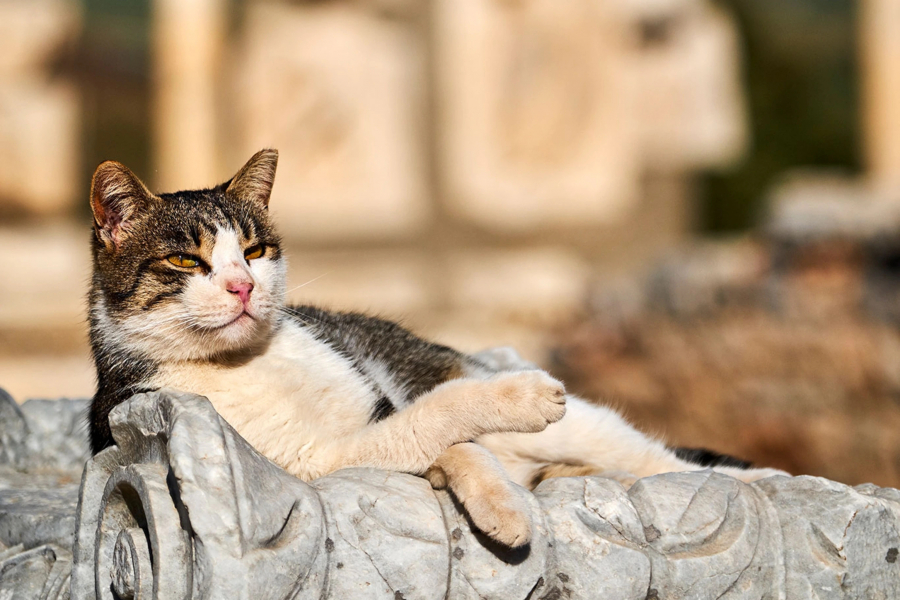
"What are you looking at? Are you taking my picture?"
For Tuul, photographing cats is just as much fun as photographing people. “Bruno and I love taking spontaneous photos of everyday life on the street,” she says.
The two photographers shared that before approaching the cats, they would try to capture the most natural, candid moments of the subjects in the photo (both human and animal). Then they would tell the subjects how they had just been photographed, and they would only interact and pet the cats if they (seemed) agreed.
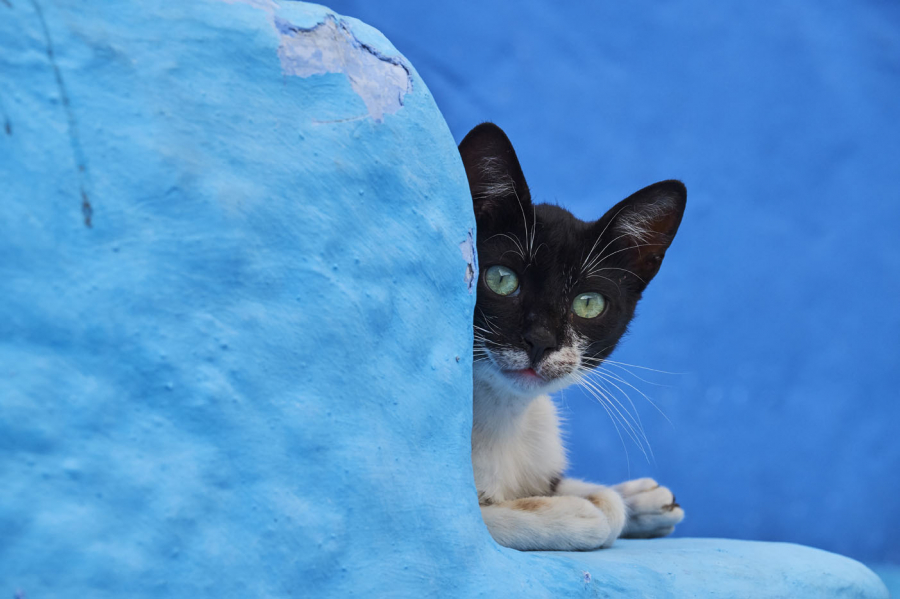
A cat peeks out from behind a wall in Chefchaouen, northern Morocco. According to legend, Jews bought the land and painted the entire city blue after escaping Spanish capture in 1492.

"Hey, what's up there guys!?"
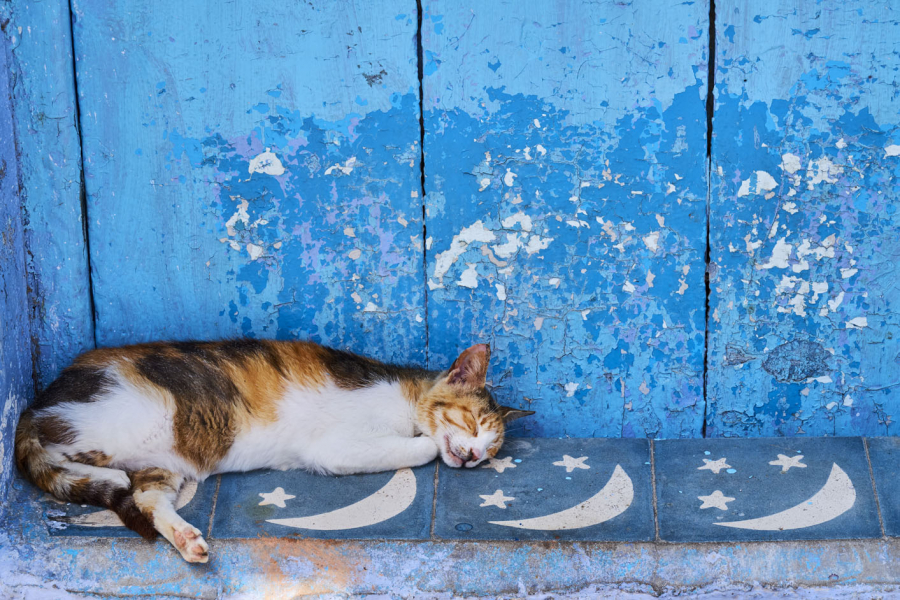
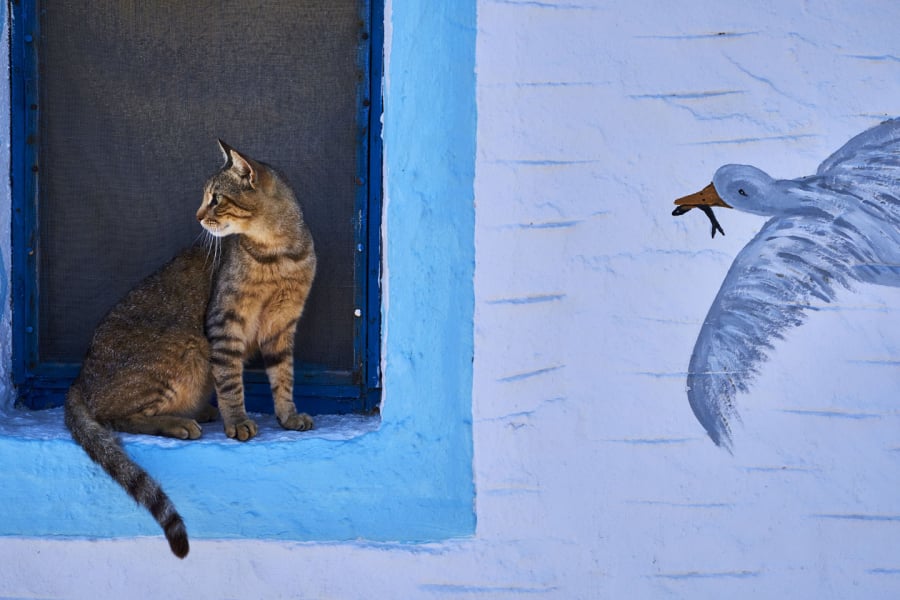

It is not difficult to see cats freely walking in every corner and street of Chefchaouen.

They even "sleep regardless" on the streets, ignoring the people passing by.
From their experiences, the two photographers noticed that stray cats in each city have similarities in their behavior, but some are more timid than others. Stray cats that were abandoned when they were young are often unfriendly to humans, but there are also stray cats that are more friendly.
“In Japan, most of the stray cats we met were not shy around humans at all,” Tuul said. “Maybe they knew that humans were kind or they had a good impression from people who fed them in the past.”

Stray cats in Japan have always had "especially close" relationships with fishermen.


There are many "cat islands" throughout the Sea of Japan. The cats here are said to be very tame and not afraid of human contact.
Japan is a country that makes Tuul and Bruno very impressed with the life of cats. Tuul and Bruno recount that cats are a symbol of luck to the Japanese: "They even have temples to worship them." Cats are also a tourist attraction to Japan as this country has up to 11 cat islands.
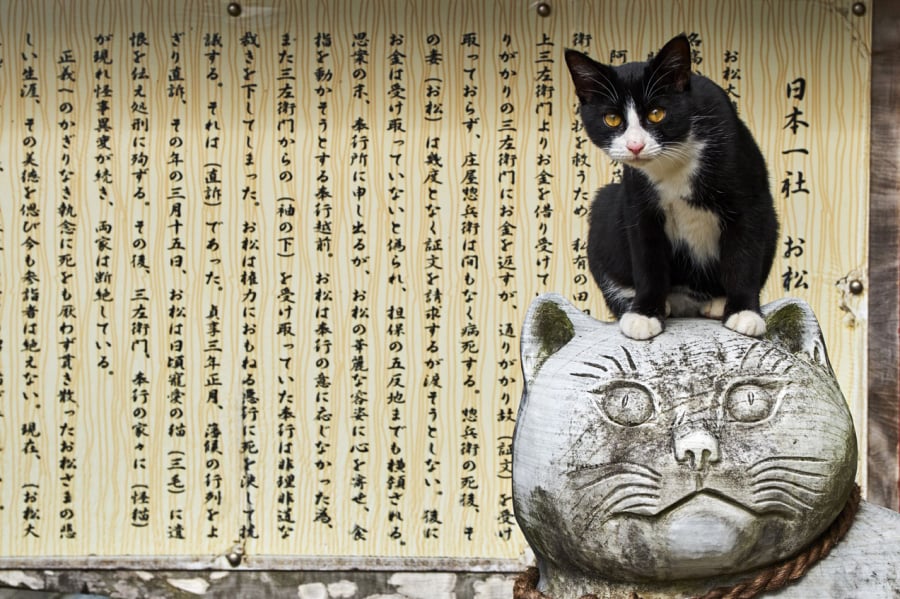
In Tokyo, there are several temples dedicated to cats. In these areas, visitors can see stone cats and real cats side by side.



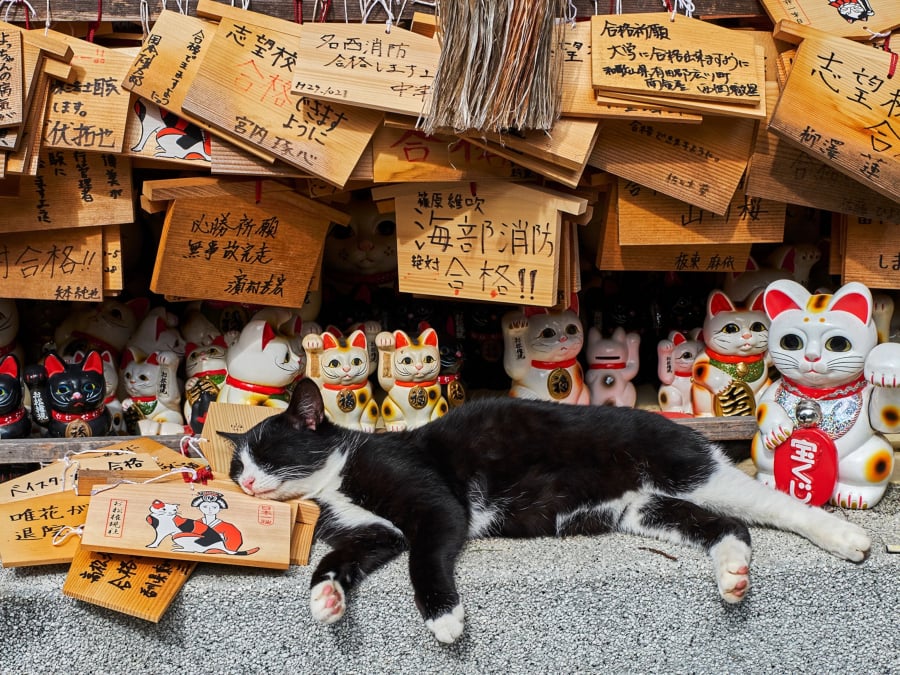
"Among those fake cats, I still stand out the most."
The photographers shared that people’s perceptions and attitudes towards stray cats are heavily influenced by local culture, religion, history and legends. Many believe that the Prophet Muhammad preached while holding his beloved cat Muezza on his lap. When he found Muezza sleeping, he even cut off one side of his shirt so as not to disturb her sleep. “In most Muslim countries like Morocco and Turkey, they have a special relationship with cats because their Prophet loved this creature,” Tuul explained.

Photo taken in Ephesus, the ancient Roman port city in modern-day Türkiye. This cat is playing in an abandoned site that is more than 2,000 years old.
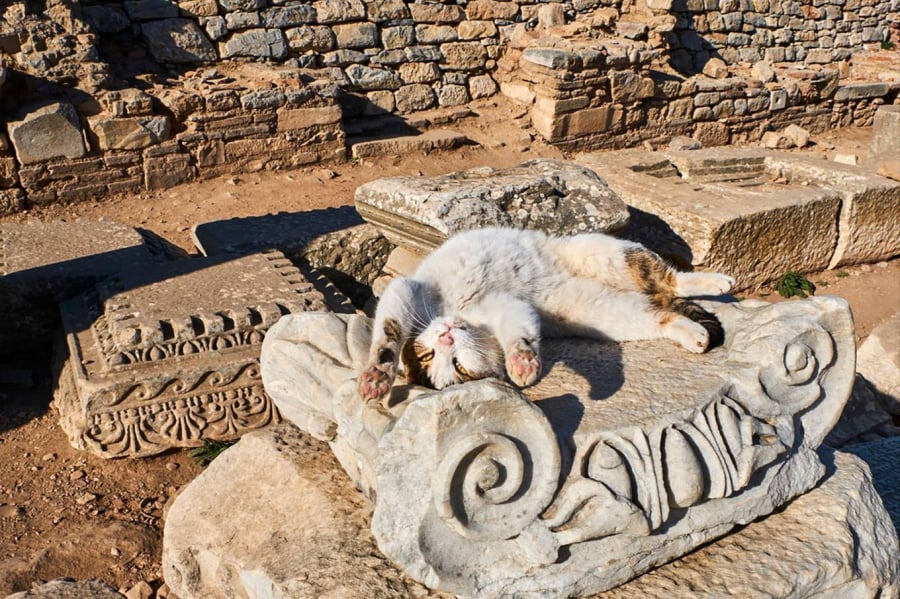
Another cat was lying on the ruins, stretching out in the sunlight.
However, not everyone likes feral cats. Most feral cats are considered a threat to local wildlife and a source of spreading disease. In 2013, a study published in the journal Nature Communications estimated that feral cats (indirectly) kill 1.3 to 4 billion birds and 6.3 to 22.3 billion mammals each year in the United States. However, this study was immediately questioned by public opinion because there was no solid evidence, and estimating such an exact number was nearly impossible.

A kitten sits in the old town of Lamu, the oldest Swahili settlement in Kenya, East Africa and a UNESCO World Heritage Site. Cats on Lamu Island tend to have narrow faces and longer legs.

There are an estimated 10,000 cats across the four main islands of the Lamu archipelago. Feral cats are a part of the indigenous culture. In addition to the large feral cat population, Lamu is also home to thousands of donkeys.
Despite the controversy over the benefits and influence of cats, most people around the world have no problem with these animals. On the island of Lamu, street cats are part of their cultural history. In Greece, cats are protected by law. In the photos of the photographer couple, you can see people calmly "ignoring" these creatures or actively petting and holding them. "For them, cats are part of everyday street life," the couple shared.

The cats fought nonchalantly and no one cared.
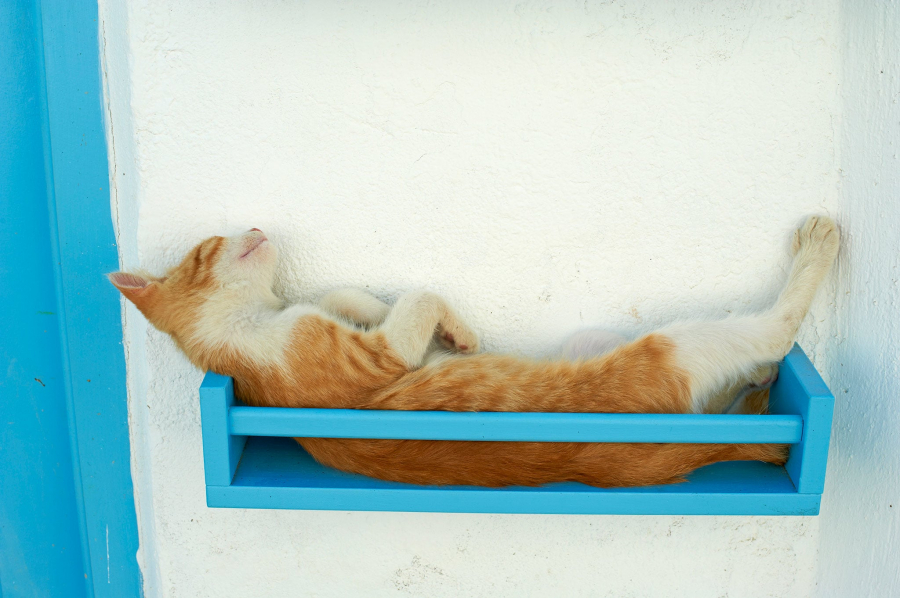
"Let's get some rest, don't bother me!"






